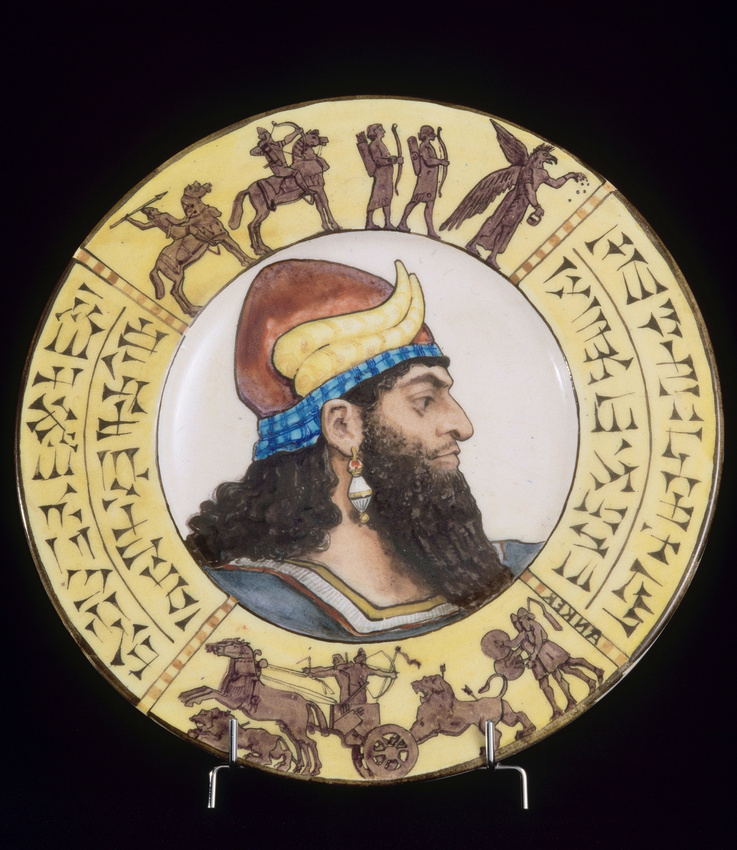Plat à décor assyrien
From 1866 on, the painter Albert Anker worked regularly with the ceramist Théodore Deck. Deck liked to involve painters, sculptors and decorators in his artistic production. This practice illustrated the determination to associate the fine arts with industrially produced objects which peaked at the end of the Second Empire and in the 1870s.
Objects in the Neo-Assyrian style were very much in vogue in England in 1860-1870. However Oriental antiquity inspired few artists in France. This dish therefore is the only one of its kind in Deck's abundant production.
Anker and Deck probably drew their inspiration for the decoration from Sir Henry Layard's book, The Monuments of Niniveh from Drawings Made on the Spot illustrated in 100 Plates (London, 1849).
The lion hunt at the bottom reproduces a relief from the Palace of Assurnasirpal at Nimrud. However, the scene at the top is harder to identify. There is a winged genie, the head of a bird of prey, followed by two archers and two horsemen. The figures in this part were probably taken from various reliefs. The cuneiform inscriptions on the right and left seem to be fanciful.
In the centre there is a portrait of a king or a priest, although the horned tiara was usually kept for deities. It is an imaginative creation by Anker based on a figure of a winged genie, the guardian of the gates, such as are found at Nimrud and Khorsabad. Better known for his rustic or intimist paintings, Anker revealed an entirely different aspect of his art in his work with Deck.










